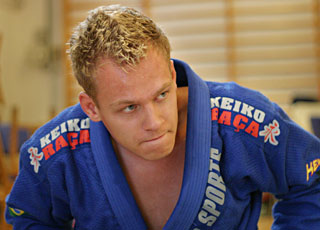This article is a good read regarding ranking in Brazilian Jiu Jitsu, it could be interesting for those who are unfamiliar with BJJ and don't have a lot of understanding of the process or those who train in BJJ, but have questions.
I certainly remember having thoughts about my rank and its legitimacy when I was awarded my purple belt and shortly afterwards I rolled Clancy Roberts, one of my first coaches, who was still a purple at the time (although he was awarded his brown belt the next day).
I remember saying to Clancy that I didn't feel comfortable wearing the same rank as him as he had been a purple when I was a white and had also had a huge impact on my development in BJJ. Clancy just laughed and said "if your coach thought you deserved the rank then you deserve it, no one can take that away from you." That comment was typically accurate and succinct and I know agree with it wholly. My feeling is that a promotion is subjective, but that is appropriate as the measure of progress varies from individual to individual.
Anyway instead of me writing about it, I will just post this article as it was written better than anything I would be likely to write.
Check the article out here.
I certainly remember having thoughts about my rank and its legitimacy when I was awarded my purple belt and shortly afterwards I rolled Clancy Roberts, one of my first coaches, who was still a purple at the time (although he was awarded his brown belt the next day).
I remember saying to Clancy that I didn't feel comfortable wearing the same rank as him as he had been a purple when I was a white and had also had a huge impact on my development in BJJ. Clancy just laughed and said "if your coach thought you deserved the rank then you deserve it, no one can take that away from you." That comment was typically accurate and succinct and I know agree with it wholly. My feeling is that a promotion is subjective, but that is appropriate as the measure of progress varies from individual to individual.
Anyway instead of me writing about it, I will just post this article as it was written better than anything I would be likely to write.
Check the article out here.










